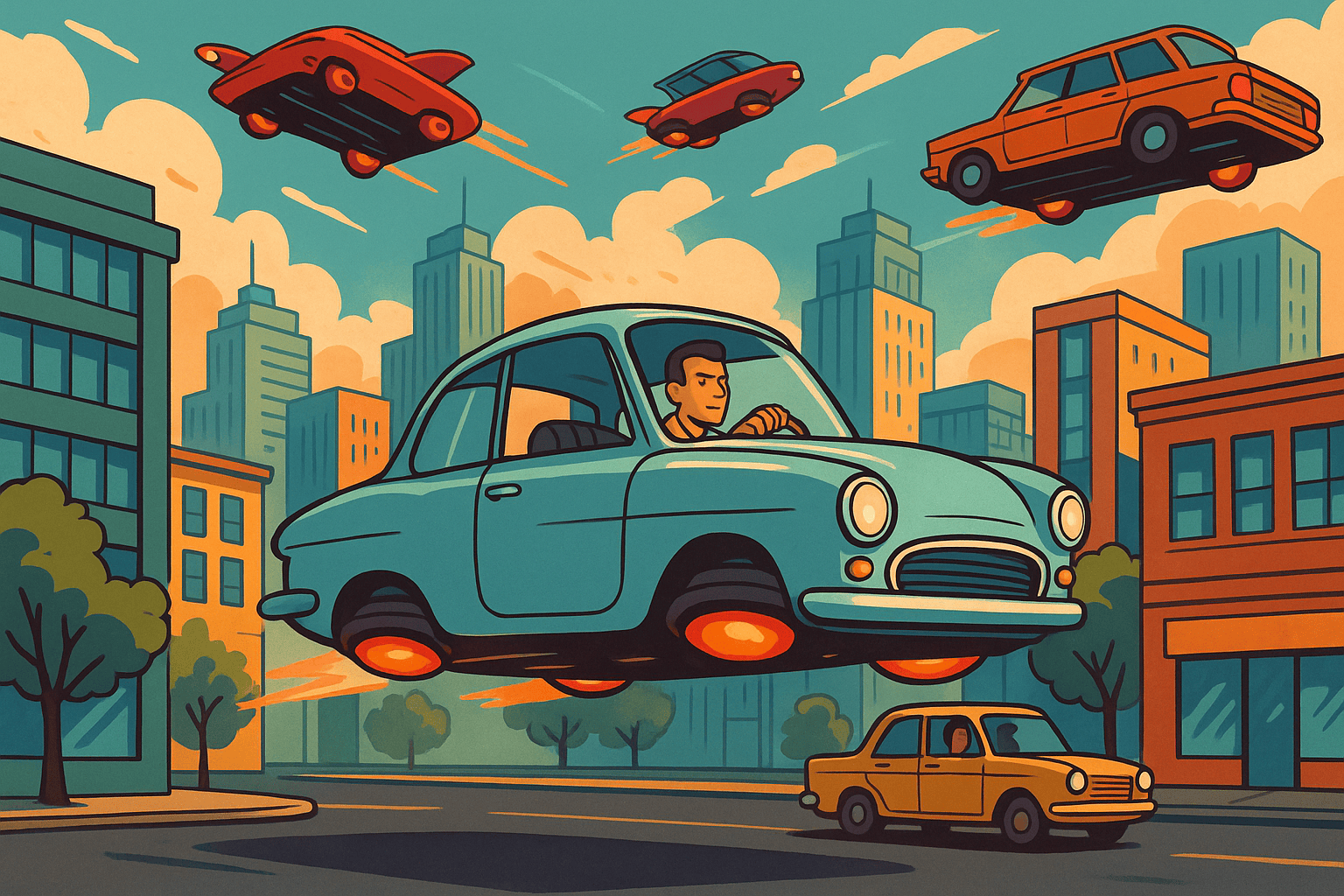The Story

The Future of Transportation: Will Delhi and Noida See Flying Cars Soon?
With the ever-growing traffic congestion in metropolitan areas like Delhi and Noida, the question of introducing flying cars no longer feels like a scene from a science fiction movie—it’s beginning to seem like a practical necessity. The rapid urbanization and increasing number of vehicles on the roads have made commuting a daily struggle for millions. This situation is pushing both policymakers and innovators to think beyond traditional infrastructure and consider radical solutions, such as sky highways and flying vehicles.
Currently, the roads of Delhi and Noida are choked with traffic during peak hours. It’s not uncommon for people to spend two to three hours stuck in traffic daily. This not only causes stress and wastes time but also contributes significantly to air pollution, noise pollution, and increased fuel consumption. The collective impact of these issues is severe, leading to health problems, a rise in temperature, and contributing heavily to global warming.
If the current trend continues, the government may have no choice but to explore the idea of taking transportation to the skies. Sky highways—dedicated air routes for flying vehicles—could become a part of our urban planning in the near future. Already, tech companies and startups across the globe are working on prototypes of electric vertical take-off and landing (eVTOL) aircrafts. These are small, battery-powered flying vehicles designed for short-distance air travel, ideal for urban environments.
Such advancements could be revolutionary for cities like Delhi and Noida. Imagine skipping hours of road traffic and reaching your destination in minutes through the air. The benefits extend beyond convenience. Flying cars, especially electric ones, could reduce the carbon footprint of urban commuting, help decongest roads, and lower pollution levels. Additionally, with proper regulation, they could operate safely and efficiently, changing the way we think about transportation.
However, turning this dream into a reality will not be easy. There are several challenges to overcome, such as developing the required infrastructure, setting up air traffic control for low-altitude flying vehicles, creating safety regulations, and ensuring public affordability. Moreover, the environmental impact of producing and maintaining such vehicles must also be considered to avoid creating new problems while solving old ones.
Nevertheless, the urgency of addressing urban traffic issues may accelerate these innovations. Governments will need to collaborate with technology companies, invest in research, and encourage clean transportation alternatives. If steps are not taken soon, the consequences could be dire—more pollution, higher temperatures, and a poorer quality of life for future generations.
In conclusion, while flying cars may still sound futuristic, the conditions in cities like Delhi and Noida are rapidly making them a practical consideration. The future of urban transportation might just be in the sky, and the time to start building it could be now.

